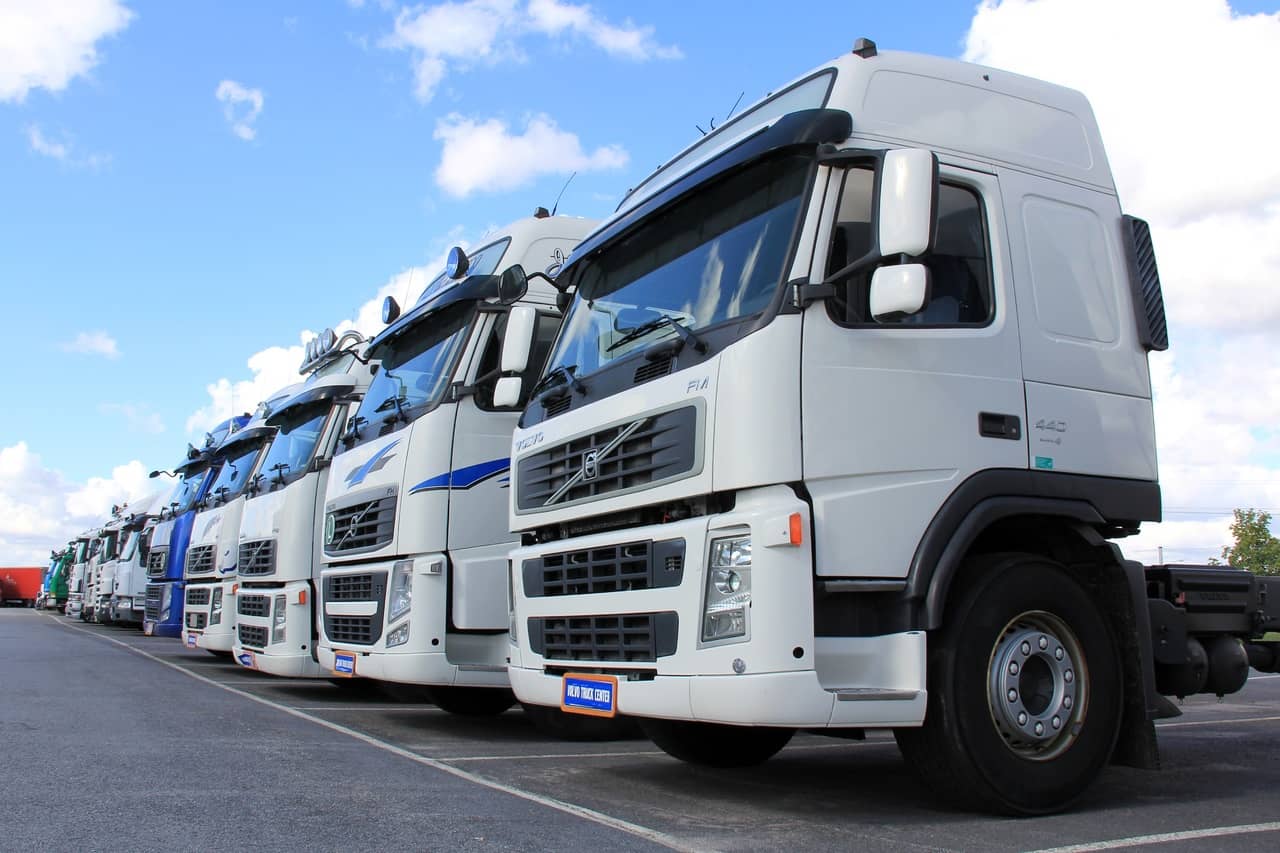How To Manage Cash Flow In Your Small Business
60% of small businesses fail within the first three years, but good cash flow management stops you from being part of that statistic
Great ideas. Great products. Great staff. These are almost never the reason small businesses fail.
Nearly all of them don’t last because of one thing — cash flow.
Managing your cash flow is non-negotiable if you want your new business to become an established player in your industry. But knowing what cash flow management tactics to use can be tricky.
That’s where we come in.
Our guide will help you preserve the long-term success of your small business.
It lists the key cash flow management methods you can use, from investing in good bookkeeping software to ensuring you don’t get behind on your invoicing.
All you have to do is read our tips and put them into practice to give your business the best chance of achieving the long-term success you want.
7 ways small business owners can improve their cash flow
- Invest in good bookkeeping software
- Regularly monitor where your cash movements are
- Review where your cash is tied up
- Work out your minimum working capital
- Effective management of your invoicing
- Streamline your inventory with sharper demand forecasting
- Free up extra cash by using credit cards sensibly
Invest in good bookkeeping software
![]()
Credit: Pixabay
There are many tasks small business owners have to look after when they start a company, that aren’t part of their immediate skill set, to keep spending under control.
Bookkeeping is a key task because it costs a lot of money to invest in a specialist. But while it’s tempting to control costs by managing your books in an Excel spreadsheet, you should avoid the DIY approach and invest in good bookkeeping software instead.
Trying to manage your finances in a spreadsheet (or by shoving invoices and receipts in a drawer and filing them away for ‘another day’) is both inefficient and risky. You need to manually build out your formulas and then ensure you keep on top of your spreadsheet(s).
This takes time to set up and manage. It also puts a lot of pressure on your Excel skills, as one small mistake could lead to serious errors that bring serious consequences if it means your records are wrong.
Bookkeeping software takes away these stresses.
When selecting your software provider, look for the following things:
- Easy and clear data entry systems
- Compatibility with bulk uploads from other systems, such as spreadsheets, credit cards or fuel card payments
- Graphs that help you see at a glance where the money is coming in and going out
These are some of the best examples of bookkeeping systems you can choose from:
Each of these platforms have their strengths and weaknesses. We advise that you research each of them, so you can select the right one for your business.
Book out time every week to monitor where your cash movements are
![]()
Credit: PXHere
It’s impossible to manage or increase your cash flow if you’re not monitoring where your money is going.
If you don’t commit part of your calendar to this, you can quickly find that your funds are sliding too close to the red, which could leave your company in a sticky situation that threatens its long term future.
This is why you must book out time every week to monitor your cash movements.
Little and often is the only way to effectively manage this task. We recommend that you review where your cash is going at least once a week, though, as much as possible is preferable.
Don’t make the mistake of trying to squeeze it into the daily running of your company. You run your business to make money, so this is the most important part of your job. This means you need to protect the time you spend on monitoring your cash movements.
So, make sure you monitor your cash movements regularly and that you stick to a routine when doing this.
Review where your cash is tied up and see if it can be released

Credit: Flickr
There are an enormous and near-endless amount of expenses involved in running a business. You need a workspace, along with the associated utilities and amenities. You need IT software. You need equipment. And these are just the basics.
This is why you need to review where your working capital is tied up. This lets you see if anything can be released, and open up your cash flow.
We’ve covered some of the key specifics to consider when reviewing your invested working capital. But there will also be things that are particular to your business that we can’t account for.
Leasing is the thing that could have the most positive, long-term effect on your cash flow. If you’re leasing vans , cars or tools and equipment rather than owning, the total lifetime cost of use is almost invariably lower than the lifetime cost of ownership..
Renting buildings also gives you far more working capital in your hands than buying, plus the agility of being able to move quickly if you need to upsize or downsize.
The added benefit of leasing equipment or premises is that maintenance costs (and the replacement of items during times of repair) are covered by the leasing company providing the goods to you. This means you can protect your cash flow in the long term, as you can avoid the unforeseen expenses associated with repairing these assets — loss of work and the cost of replacement.
So, review where your cash is tied up and see if you can maximise your expenses by sensibly shifting to vehicle leasing, short term equipment hiring or building rental.
Work out your minimum working capital and take action early to avoid getting close to it

Credit: Flickr
Capital is the key reason small businesses fail or are unable to make the step up. No matter how great your product/service is, or the team you employ, if you run out of liquid assets in the bank, then the wheels of your company grind to a screeching halt — either temporarily or permanently.
If you want to ensure your cash flow management doesn’t lead you to this outcome, you have to work out your minimum working capital and take action before you reach it.
Your minimum working capital is the difference between your current assets and your short term liabilities:
- Current assets – current liabilities = required working capital
If you’re in the black, great. If you’re in the red, you need to take swift action.
The important thing to note with managing your working capital is that there are things you can do to address your issues.
The obvious solution is to apply for a loan if you need one, or to seek outside investment.

Credit: Flickr
If you go down the loan route, there are two main options available to you:
If you down down the investment route, you have a number of options to choose from:
Remember that almost every company benefits from some form of investment at some stage in their existence. There’s no shame at all in taking out a loan if it’s what you need to protect the cash flow of your business.
Effective management of your invoicing to ensure you never get behind

Credit: Max Pixel
One of the quickest ways to financial ruin for any small business is not getting your invoices paid on time.
Failing to get the money you’re owed for the work you’ve completed has the knock-on effect of draining your cash flow, which could mean you’re unable to pay your creditors, staff, or yourself.
To stop this from happening, you need an effective management process for your invoicing. Your process must be robust to ensure you never get behind with invoicing and always take immediate action on late payments.
One tip to support your invoice management is to figure out how much you could ask to be paid in advance (without becoming uncompetitive). You could offer “early bird” discounts for customers who pay in advance.
This means there are essentially two key elements to successfully managing your invoicing:
- Make it easier and even cheaper for your customers to pay their invoices
- Take fast and firm action when any of your customers make late payments
Adopt this strategy and you’ll never get behind on your invoicing and pay your creditors on time.
Streamline your inventory by sharpening your demand forecasting

Credit: PxHere
Supply and demand is the backbone of business. Your customers have a demand for goods or services and you supply these things to them.
But you need to manage your supply effectively, so your company doesn’t have a warehouse full of stock that’s gathering plenty of dust, but weak revenue for your business.
Achieve this by streamlining your inventory through demand forecasting.
Demand forecasting uses analytics to predict customer demand, with the aim being to map your supply to meet the needs of your customers. Huge enterprises have been fine-tuning this for decades and they call it “Just in Time” delivery of stock, but there’s no reason why a small business cannot benefit from the same principle.
There are a few methods you can adopt to demand forecasting, but the key is to put in place regular reviews. This is so you can quickly spot any cases where your inventory numbers are oustripping customer demand — therefore, you’re spending money on inventory that isn’t being sold at profitable levels.
So, put in place a strategy for demand forecasting, keep it under regular review, and make sure you implement it effectively.
Free up additional funds by investing in the appropriate credit cards

Credit: Wikimedia
A big part of successful cash flow management is having the right levels of credit at the right time.
There are many approaches you can take to ensure you have the processes in place to support this. We’ve highlighted the important ones, but sometimes you need to access additional credit to get the levels you need. This is where credit cards (of all types) can help.
Credit cards give you access to short-term finance. They allow you to buy the things you need right now and pay for them at a later convenient time – giving you breathing space while you wait for anticipated payments to come in. (We’re talking here about paying for items that don’t have pre-agreed payment dates, such as utilities that you settle by direct debit on specific dates.)
This gives you breathing space and lets you manage your cash flow in a sensible way, one where all of your costs can be covered — it’s just that some are shifted out into the next week or month.
There is a right way and a wrong way to use credit cards. If you KNOW that a payment is due, and you use credit on a company credit card to keep you going till then, you are using it the right way. If you simply don’t have enough cash in your business, and you borrow more money than you already know is going to come your way as payment for goods or services rendered, hoping things will get better soon, then you are using a credit card the wrong way.
Taking a gamble with your business like this is about as safe as buying a pile of lottery tickets and crossing your fingers. Instead, you need to have a re-think about your business model, your marketing strategy or any other way to kick-start your earning power.
These are the main type of credit cards your business can benefit from:
- Company cards: credit cards that can pay for any goods and services you need
- Fuel cards: credit cards that can cover the cost of diesel and petrol for vehicles
- Trade cards: credit cards that you can use to purchase construction materials
Use business credit cards and other types of credit cards (such as fuel cards and trade cards) to free up extra cash and make your cash flow more regular.
What you can do to increase liquidity for your small business in the long term

Credit: PXFuel
Cash management isn’t just about the flow of money in and out of your company right now.
It’s also about using tactics that have the potential to increase small business cash flow (liquidity) in the long-term, so you can future-proof your company.
While there are plenty of methods you can adopt, we recommend these three tactics as being the best ways to increase your liquidity in the long run:
Just in time payment of invoices
Take a look at the timing of your bill payments. Do you feel really organised if you pay all the invoices that come to your company right away? Unfortunately that’s not a good idea.
The big companies always pay all their invoices just in time, the day before they are due. This maximises the amount of money sitting in their bank account, earning interest, at any given time.
There’s often a 30 day or 90 day time limit for the payment of invoices. If you routinely pay them early, you reduce the total liquidity in your bank account (and also reduce the interest you can be earning on cash in your account).
The most important thing to avoid, when you start doing this, is making late payments and incurring penalties! Set up diary reminders every day to make sure you never miss making a payment.
For regular payments, set up direct debits to make sure your payments are never late, as this could incur greater costs. For example, fuel cards give you a seven-day line of credit and you can set up a direct debit so you never forget to pay on time.
Sell assets you don’t need
Not all of the assets you purchase are evergreen and there’s no business sense in keeping hold of those that are no longer making you any money.
Introduce a process of selling off assets that are no longer useful to your company, so you can get some money back from them.
Invest in tangible assets
They say you have to speculate to accumulate, and that’s absolutely true for companies, whether you’re an SME or small business.
Investing in long-term financing for tangible business assets, such as new vehicles or equipment, can improve your future liquidity by giving you the tools you need to boost your earning power.
Why it’s important to improve cash flow for your small business

Credit: PXHere
Without effective cash flow management your small business won’t survive in the long term — it really is that simple.
Startup failure is incredibly common, with 20% of new businesses not making it to the end of their first year and 60% going bust by the end of their third year.
There are a huge number of reasons why all of these startups fail, but money is the overwhelming cause.
So why is it so important to manage and improve cash flow for your business?
Cash flow management is about security. It’s securing the future of your company by ensuring that you have the capital you need to pay for all the costs associated with running a business.
The future of your company depends on cash flow management. Get it right and stay afloat. Get it wrong and your new business could join the many others that don’t succeed to see their first birthday.
iCompario can help a small business manage your cash flow with fuel cards
We’ve given you some tactics for managing your cash flow and increasing your liquidity. Using fuel cards is one of the tactics we’ve recommended (to provide you with short-term credit) and we can help you find the right one.
Compare the best fuel cards for small businesses with iCompario by entering the requirements of your company into our comparison tool. You’ll then be presented with a list of cards that meet your criteria. All you have to do is pick the one you want and start your application.
iCompario is the free online marketplace for business products and services, where managers and owners can research and rapidly compare fuel cards, vehicle tracking systems, insurance, telecoms and other essentials. The team follows up online queries by telephone so every site visitor finds their ideal, future-proof product at the best price possible.



